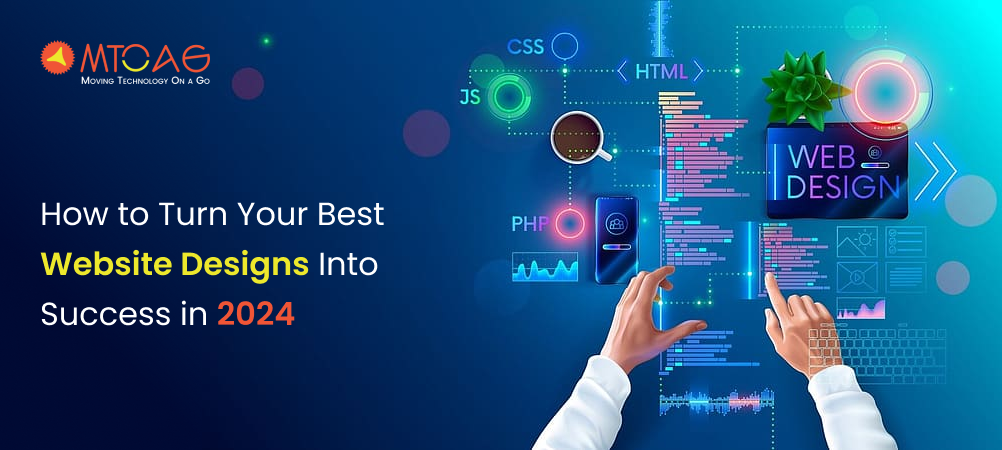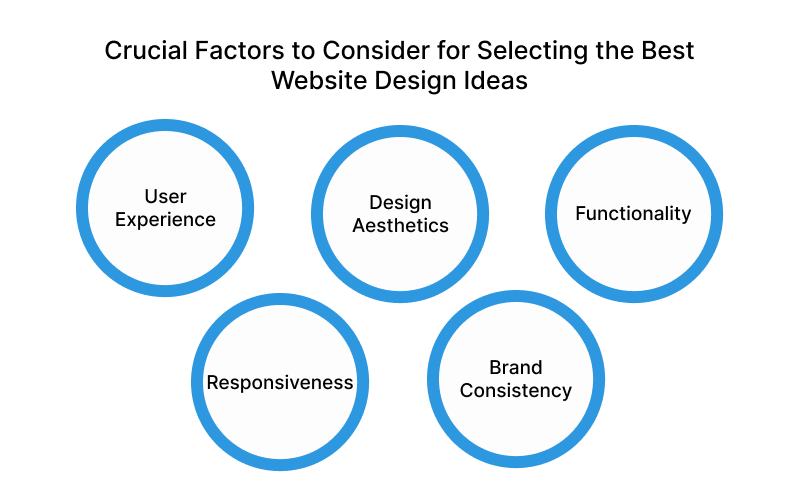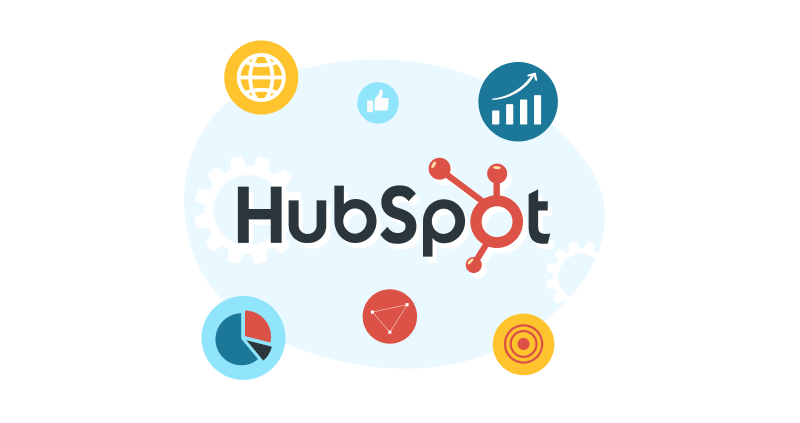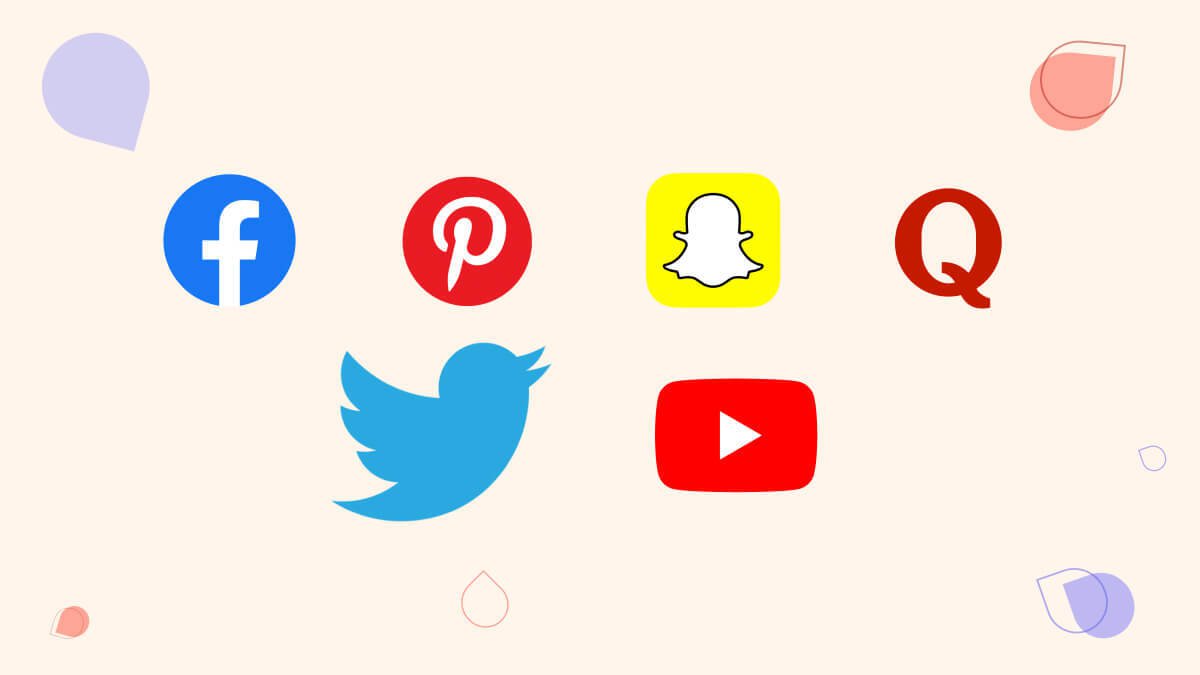2500+
Successful Projects

A website, as the first point of contact in the ever-evolving digital landscape, plays a crucial role in a company's interaction with its audience. A well-thought-out, professionally designed website, backed by user research, not only captures attention but also enhances the user experience, fostering interaction and trust.
As customers increasingly turn to the internet for information, a website serves as a readily available, 24/7 resource, providing valuable information, promoting products, and facilitating seamless transactions. Usability testing, which ensures easy user navigation, is a key driver of increased user engagement.
Table of Contents
UI/UX design, beyond aesthetics, must be scalable and useful to ensure users can interact with information and explore it effectively. This is a crucial aspect of website design that should not be overlooked.
In 2019, the worldwide market for website builder software reached a value of over $7 billion. In contrast, projections for the years 2020–2026 indicate a CAGR rate of 9.4%. With this rate of growth, the market is expected to reach $13.6 billion in 2026. Statistics from the web design industry indicate that, as ecommerce grows, these platforms will play a bigger and bigger part in determining what is expected of web designers. (GlobeNewswire)

In today's fiercely competitive digital market, a polished website is not just a tool for drawing in new business and retaining existing clients, but also a representation of the brand's identity. This underscores the crucial role of website design in business success.
Take a look at these figures to see why having a well-designed website is crucial for businesses.
Professional websites are judged on several essential factors that affect their overall usability and efficacy.
These standards aid in evaluating how well the website satisfies user demands and corporate goals.

The following critical factors were taken into consideration while selecting the top 15 expert website design ideas for you:
A user's whole impression of a website throughout their interaction with it. This covers the user journey's general flow, intuitiveness, and simplicity of navigation.
The website's visual appeal and design components. Using color schemes, typography, imagery, and visual harmony makes for a good initial impression.
How well does a website carry out its intended duties? This guarantees that functions like contact forms, search capabilities, and interactive components operate without a hitch.
The capacity of a website to adjust and function properly across a range of screens and devices is known as responsiveness. Responsive design is essential for expanding one's audience and enhancing user accessibility.
How well do the language and style of the website complement the broader brand identity? Relentless branding enhances credibility and cultivates trust.

A professional website's design must consider user experience, functionality, and aesthetics. The following advice can assist you in designing a website with professionalism:
The website for Apple is an excellent illustration of design simplicity and clarity.
Its simple design, along with its excellent graphics and simple navigation, provide an exceptional user experience.
In addition to making an interface visually appealing, thoughtful use of whitespace and uniform typography guarantee a user-friendly experience.
This emphasis on minimalism highlights Apple's dedication to providing a fluid and aesthetically pleasing internet experience by allowing users to concentrate on the essential components.
Stripe's website stands out for its straightforward design and powerful narrative.
Users are expertly guided through different material via the use of dynamic visuals and concise prose, creating a smooth and captivating experience.
Call-to-action buttons are placed strategically to make essential activities easy for visitors to reach and to enhance the overall user experience.
Stripe's dedication to providing customers with an easy-to-use interface for using its services is shown by this blend of a captivating story, minimalism, and intuitive design features.
The website for Airbnb is the ideal illustration of how to employ immersive imagery effectively.
The site provides an exciting and visually stimulating experience with superb photos and a well-designed user interface.
The user-friendly design of the search and filtering choices makes it easy for people to choose lodgings that suit their needs, which also improves user engagement.
Airbnb's focus on visual storytelling and intuitive functionality is indicative of its dedication to providing a smooth and delightful user experience for users as it navigates the wide range of offers on its site.
The website for Intercom successfully combines style and utility.
The platform improves user engagement by including interactive components such as animated images and tooltips, resulting in a dynamic and engaging experience.
The constant use of brand colors supports the company's identity and creates a professional, well-coordinated visual presence.
Their website is dedicated to providing a visually appealing and handy interface, meeting the expectations of consumers looking for a sophisticated but approachable communication platform. A well-organized layout complements this.
The website for Dropbox is notable for its exceptional level of clarity and simplicity.
The homepage's centerpiece is a captivating film that clearly conveys the product's value proposition from the beginning.
The website expertly leads visitors through essential features by using succinct headlines and well-designed symbols, delivering information in an easily readable fashion.
This dedication to unambiguous communication and user-friendly design is consistent with its focus on offering a simple and effective platform that enables customers to comprehend and use its cloud-based services.
Squarespace's commitment to exquisite design is reflected in its website.
The website demonstrates its skills and has an eye-catching layout that emphasizes its dedication to aesthetics.
Squarespace has an intuitive drag-and-drop interface and well-defined sections so users can quickly understand and explore its offerings.
The company's goal of enabling people to construct and maintain their websites with a smooth and creative experience aligns with this focus on visual appeal and user-friendly functionality.
Because of its user-centric design, Shopify's website makes a lasting impact.
The straightforward navigation ensures a smooth user experience by making it simple for users to explore the platform's offerings.
Authentic user experiences reinforce the platform's value by adding a degree of authenticity via the inclusion of actual client testimonials.
Bright images help create a visually captivating atmosphere and an obvious and unambiguous call to action, leading visitors around the website in an encouraging and convincing way.
This well-considered fusion of visually engaging information, components that establish legitimacy, and user-friendly design showcases Shopify's dedication to providing a reliable and captivating e-commerce platform.

The HubSpot website is an excellent illustration of how to organize material effectively.
The platform uses a well-structured layout to ensure that content is presented logically and clearly, even for visitors who may find complicated subjects difficult to understand.
Using infographics makes complex concepts more accessible to visualize.
In addition to strengthening its identity, HubSpot's dedication to using branding components consistently results in a unified and polished look.
They are committed to providing marketing, sales, and customer service professionals with an intuitive and aesthetically pleasing platform, which is evident in their careful approach to content display and design.
Although it is not a stand-alone website, Google's Material Design deserves recognition for its significant influence on UI/UX in the digital space.
Material Design is a complete design framework that has profoundly changed the user interface and experience environment.
Its fundamental ideas—consistent design language and purposeful motion—have influenced a large number of websites and apps.
This effect transcends specific platforms, promoting a unified and seamless digital experience across various hardware and operating systems.
With its emphasis on consistent and meaningful interactions, Google's Material Design has established itself as a standard for producing aesthetically pleasing and intuitive user interfaces. This has helped to create a more seamless and pleasurable user experience across the digital world.
The website Behance serves as a significant gathering place for creative workers, and this creative mentality is flawlessly captured in its design.
The portfolio presentation is aesthetically pleasing and thoughtfully arranged, making it simple for visitors to browse and find work that inspires them.
The smooth navigation improves the user experience overall and makes exploring a wide range of creative works simple.
A grid layout and the use of dynamic filters provide another level of capability that makes the platform more dynamic and exciting.
Behance's website, which was created with the creative community in mind, is a testament to its dedication to presenting and encouraging the variety and creativity intrinsic to the design and art industries.
Superlist uses a dramatic contrast between bright and dark hues to improve the website's aesthetic appeal. The platform is committed to making it easier for teams –whether they are using it for work or play –to handle tasks. Notable attributes consist of:
Blue Monday presents a novel viewpoint on the production of digital material. Rather than greeting users with a text message, the website welcomes them with a video as soon as the page loads, which encourages interaction. The following are some of Bluemonday's design standouts:
It's said that standing out in today's digital environment is challenging. So, how can one distinguish their website as the work of an award-winning web designer?
Co-founder and interface designer Tore S. Bentsen works at BASEBORN. Having won several accolades, Tore S. Bentsen's remarkable portfolio required a matching website design.
Tore S. Bentsen's area of expertise is combining branding with online flow, which must be reflected in the portfolio's online design. Elements of the dynamic and captivating site design zoom in and out of the screen with parallax scrolling. Tore S. Bentsen is ready to help your site succeed!
The perfect balance of white space and typefaces like Rosalinda and Bandeins Sans keeps the audience hooked on the message!
All things considered, the Tore S. Bentsen portfolio succeeds in drawing attention with eye-grabbing imagery, captivating typography, and a flawless user experience.
It is a lot of work to look away from SPINX Digital's website once you visit it. Spinx Digital is a firm that lives, eats, and breathes digital, as seen by its striking font and interface.
With a group of creative thinkers and digital marketers at the forefront, SPINX Digital is a website design and development business. The website uses a cinematic design that lures visitors in with vivid colors, easy navigation, and a minimalist aesthetic to highlight this particular innovation and marketing. Because of this, it differs from any other website design on the market.
The website's vivid green color scheme draws the eye straight away and links in with the SPINX Digital brand. Thanks to the adaptable web design, visitors may quickly go to their intended location. Clear text and icons convey critical information without taking up too much room. Overall, SPINX Digital's website effectively illustrates the company's expertise in producing captivating custom designs for its clientele. Come on in and have fun!
People worldwide are aware that the number of endangered species is rising. Critical Danger was determined to take action. They assembled designers to produce unique goods to generate funds for organizations protecting endangered wildlife.
The site design needed to draw visitors in with a sad tale to encourage them to purchase the product. The Critical Danger website engages visitors with art, imagery, and a gripping narrative.
The website's primary goals are to inform visitors and motivate them to take action. Many factors enable this. Fact cards suddenly appear on the screen to educate people about endangered species. The urgency is emphasized by using a strong, red typeface throughout the website design. The text is juxtaposed with newspaper articles that zoom in on the screen to emphasize how serious the situation is. The user is guided to the product purchase link at the conclusion of the page using engaging images and parallax scrolling.
A website's design might draw influence from a variety of sources. Here are a few locations where you may find innovative concepts and fashions:
Online design galleries and exhibits such as Behance, Dribble, Awards, and SiteInspire may be explored. These online resources provide carefully selected sets of global website designs arranged according to functionality, style, and industry.
Keep up with online publications like Designmodo, Creative Blog, and Smashing Magazine. These sites often provide roundups, tutorials, and articles that showcase the newest styles and cutting-edge design concepts.

Utilize Twitter, Pinterest, Instagram, and other social media sites to track design accounts and hashtags. On these platforms, many designers and firms share their work and inspiration for design, offering a steady supply of new concepts.
Take webinars and listen to podcasts on design presented by thought leaders and professionals in the field. These video and audio formats provide insightful analyses, helpful hints, and case studies to motivate your design process.
For ideas and insights into design philosophy, principles, and case studies, peruse design books, periodicals, and printed publications. Web designers may benefit significantly from reading books like Jesse James Garrett's "The Elements of User Experience" and Steve Krug's Don't Make Me Think."
Examine your niche or business websites to observe how leaders and rivals present themselves online. Examine their design, content approach, and user experience to find patterns and recommended practices.
To see samples of well-designed websites, peruse the portfolios of creative agencies and design studios. Websites for agencies often feature their finest work as well as their skills and approach to design.
For pre-made website templates and themes, check out markets for templates such as ThemeForest, TemplateMonster, and Creative Market. These templates may be used as a starting point or source of inspiration for your design projects, even if they are not custom-made.
To get fully immersed in the creative world and acquire inspiration from artists and designers from a variety of disciplines, attend art exhibits, design conferences, and industry events.
Always have an open mind when you are inspired, and modify concepts to fit your project's objectives, target audience, and brand identity. While keeping up with current design trends is essential, you should also make an effort to produce designs that are unique, powerful, and appropriate for the target audience.

Coming up with concepts for websites can be both a fun and challenging endeavor. When you are coming up with ideas for a website design, consider these imaginative paths:
I love minimalism with its clear lines, plenty of white space, and easy-to-use navigation. Simple designs provide a smooth user experience while communicating beauty and class.
Striking typography creates a powerful visual impression. Experiment with various fonts, sizes, and styles to establish hierarchy and focus.
Use bright color schemes to give your website a boost of vitality. Vibrant and contrasting hues may elicit a range of emotions and make your brand stand out.
Use original illustrations or graphics to give your website individuality and visual appeal. Visuals may help communicate your brand's narrative and make the user experience unforgettable.
You may draw in your audience by using interactive components like animations, hover effects, and interactive sliders. Your website may become more dynamic and increase user engagement with interactive elements.
To create an immersive browsing experience, experiment with scroll-triggered animations, parallax scrolling, and scroll-based navigation. Your website may get depth and dimension with these effects.
Use eye-catching images and videos to draw in customers and spread the word about your company. Your audience may be connected, and emotions can be evoked through visual material.
Create distinctive navigational components that enhance user experience and represent your business identity. Consider unconventional navigational styles, such as fullscreen overlays, sticky menus, and sidebars.
Make sure your website is mobile-friendly by using responsive design concepts. A smooth experience on all devices requires a layout that is optimized for mobile.
When creating designs, consider the needs of your target audience first. Conduct user research better to understand user wants, preferences, and pain spots, and adjust your design as necessary.
Recall to maintain consistency and brand identity in the design of your website. Let your imagination go wild while prioritizing practicality and usability, whether creating a brand-new website or redesigning an old one.
When creating a website, the collection of the top 15 well-designed websites may be a great source of inspiration.
They provide insightful information on the fundamentals of successful design, user interaction, and brand communication.
Examining these samples may provide a UI/UX design business with a roadmap for developing visually stunning and user-friendly websites for its customers.
Appreciating the subtleties in these designs can help you tailor your strategy and provide better digital experiences.
Continue to be inventive, creative, and inspired as you push the limits of design excellence in the ever-changing digital realm.
What is web design?
Web design refers to the process of creating the visual appearance and layout of websites. It involves various elements such as layout, colors, fonts, graphics, and user interface components to ensure an aesthetically pleasing and user-friendly website.
Why is web design important?
Web design is crucial because it impacts how users perceive and interact with a website. A well-designed website not only attracts visitors but also enhances user experience, increases engagement, improves conversion rates, and strengthens brand credibility.
What is responsive web design?
Responsive web design is an approach to designing websites that ensures optimal viewing and interaction experiences across various devices and screen sizes. A responsive website dynamically adjusts its layout and content based on the device used by the visitor, providing a seamless user experience.
What is the difference between web design and web development?
Web design focuses on the visual aspects and user experience of a website, including layout, colors, typography, and graphics. On the other hand, web development involves the technical implementation of the design using programming languages such as HTML, CSS, and JavaScript to create functional and interactive websites.
What tools are used in web design?
There are various tools used in web design, including graphic design software like Adobe Photoshop and Illustrator for creating visuals, wireframing and prototyping tools like Adobe XD and Sketch for designing layouts, and website builders like WordPress, Wix, and Squarespace for building websites without coding.